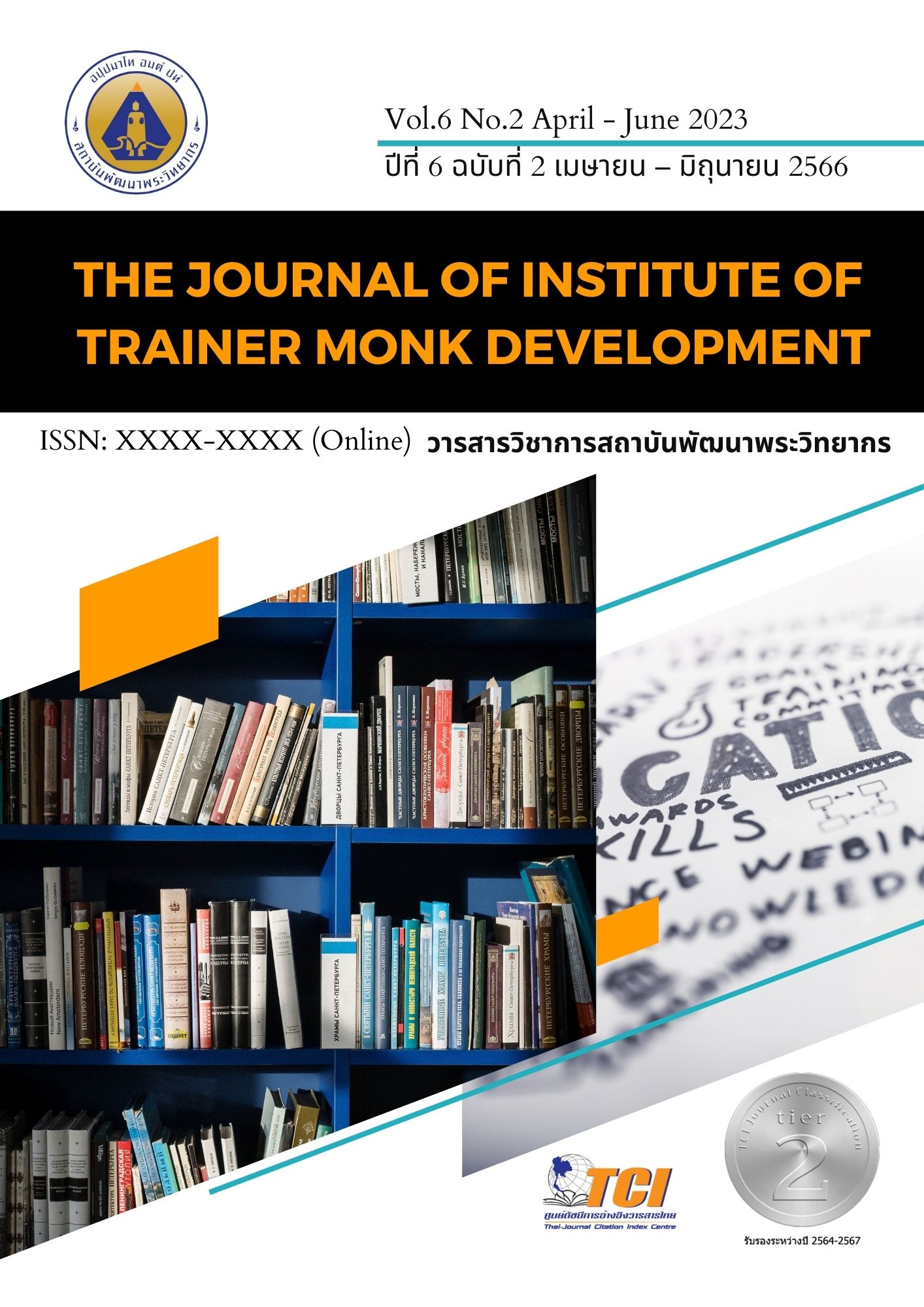Preserving the Identity of the Raman People According to Buddhism in the Community of Wat Songtham, Talat Subdistrict, Phra Pradaeng District Samut Prakan Province
Main Article Content
Abstract
This Article aimed to study 1) the identity of the Ramans.; 2) study the beliefs and rituals of the Raman people; and 3) study the identity of the Ramans according to Buddhism In the community of Wat Song Tham, Talat Subdistrict, Phra Pradaeng District Samut Prakan Province. This research is quality research. Data were analyzed using the triangular technique. write a descriptive narrative. The research results were found as follows; 1) Ramans in Wat Songtham community Samut Prakan Province There is a clear identity, dressing, attending religious ceremonies. The men will wear a red sarong and wear a white shirt, while the women will wear a red sarong with a white lace dress and a shawl over their shoulders. and have a unique language used to communicate with each other 2) Ramans in Wat Songtham community Samut Prakan Province There is a belief that (1) a male child born in Buddhist blood must be ordained. (2) Respecting the ancestors whether you have passed away or are still alive Will bring prosperity to oneself and the family and (3) believe that ghosts are ghosts that protect and protect Therefore, a shrine was built in the village. where people can conveniently come and offer offerings The rituals of the Raman ordination ghost house Dance offerings to Chao Pho Chao Mae only in the area that is a Mon people. ancestor worship holds a family ghost having an offering Making merit for family ancestors 3) Buddhism influenced the Raman community. It can be seen from the belief in karma, love, peace, simplicity, adhering to conservative traditions. It can be seen from the inheritance from the ancestors that they have never been broken. peaceful coexistence to make the descendants continue to inherit until the present.
Article Details

This work is licensed under a Creative Commons Attribution-NonCommercial-NoDerivatives 4.0 International License.
บทความที่ได้รับการตีพิมพ์เป็นลิขสิทธิ์ของวารสารวิชาการสถาบันพัฒนาพระวิทยากร
ข้อความที่ปรากฎอยู่ในบทความที่ได้รับการตีพิมพ์ในวารสาร ถือเป็นความรับผิดชอบของผู้เขียนบทความ และข้อคิดเห็นนั้นไม่ถือว่าเป็นทัศนะและความรับผิดชอบของกองบรรณาธิการวารสารวิชาการสถาบันพัฒนาพระวิทยากร
References
กพช. เลขที่ 40/2519. (2564). จารึกวัดโพ(ร้าง) อ.เมือง จ.นครปฐม พบในปี 2495 เป็นอักษรปัลลวะ ภาษามอญโบราณ “จารึกในประเทศไทย” ศูนย์มานุษยวิทยาสิรินทร (องค์กรมหาชน) ปัจุบันจารึกในพิพิธภัณฑสถานแห่งชาติ พระปฐมเจดีย์. สืบค้นข้อมูลเมื่อวันที่ 16 กรกฎาคม 2564 จาก http://surl.li/faugx
กลุ่มงานยุทธศาสตร์การพัฒนาจังหวัด. (2561). แผนการพัฒนาจังหวัดสมุทรปราการ 4 ปี (2561-2564). กลุ่มงานยุทธศาสตร์และข้อมูลเพื่อการพัฒนาจังหวัด: สำนักงานจังหวัดสมุทรปราการ.
เกศสิรินทร์ แพงทอง. (2546). “การปรับเปลี่ยนอัตลักษณ์และวิธีการดำรงรักษาอัตลักษณ์สำคัญของชาวมอญอำเภอพระประแดง”. (วิทยานิพนธ์ศิลปศาสตรมหาบัณฑิต). สถาบันบัณฑิตพัฒนบริหารศาสตร์.
พิมพ์ศิริ มงคลฟัก. (2563). วัฒนธรรมชาวมอญ: ประเพณีของชาวมอญ. สืบค้นข้อมูลเมื่อวันที่ 17 พฤษภาคม 2564 จาก http://pimsiri55010112060.blogspot.com/.
พงศกร เบ็ญจขันธ์. (2555). มอย: ชนชาติเจ้าของอารยธรรมอันเก่าแก่ในแผ่นดินพม่า ศูนย์พม่าศึกษา. สืบค้นข้อมูลเมื่อวันที่ 16 กรกฎาคม 2564 จาก https://www.gotonow.org/posts/15498.
พระเทพเวที (ประยุทธ์ ปยุตฺโต). (2533). รากฐานสําหรับพุทธจริยศาสตร์สําหรับสังคมร่วมสมัย. กรุงเทพมหานคร: สํานักพิมพ์มูลนิธิโกมลคีมทอง.
พระมหาสมจินต์ สมฺมาปญฺโ. (2534). นรกและสวรรค์ในพระพุทธศาสนาเถรวาท. (พิมพ์ครั้งที่ 3). กรุงเทพมหานคร: โรงพิมพ์มหาจุฬาลงกรณราชวิทยาลัย.
เสถียร โกเศศ. (2524). การศึกษาประเพณีไทย. (พิมพ์ครั้งที่ 3). กรุงเทพมหานคร: ราชบัณฑิตยสถาน.
หอสมุดแห่งชาติ. (2564). “จารึกเสาแปดเหลี่ยม” ปัจจุบันอยู่ที่หอพระสมุดวชิรญาณ กองหอสมุดแห่งชาติ กรุงเทพมหานคร, D-Library; National Library of Thailand. สืบค้นข้อมูลเมื่อวันที่ 16 กรกฎาคม 2564 จาก http://164.115.27.97/ digital/items/show/6515
อาภรณ์ สุนทรวาท. (2547). ไทยมอญ 8 ชาติพันธุ์ในราชบุรี. สํานักวัฒนธรรมจังหวัดราชบุรีและสภา วัฒนธรรมจังหวัดราชบุรี: ธรรมรักษ์การพิมพ์.


